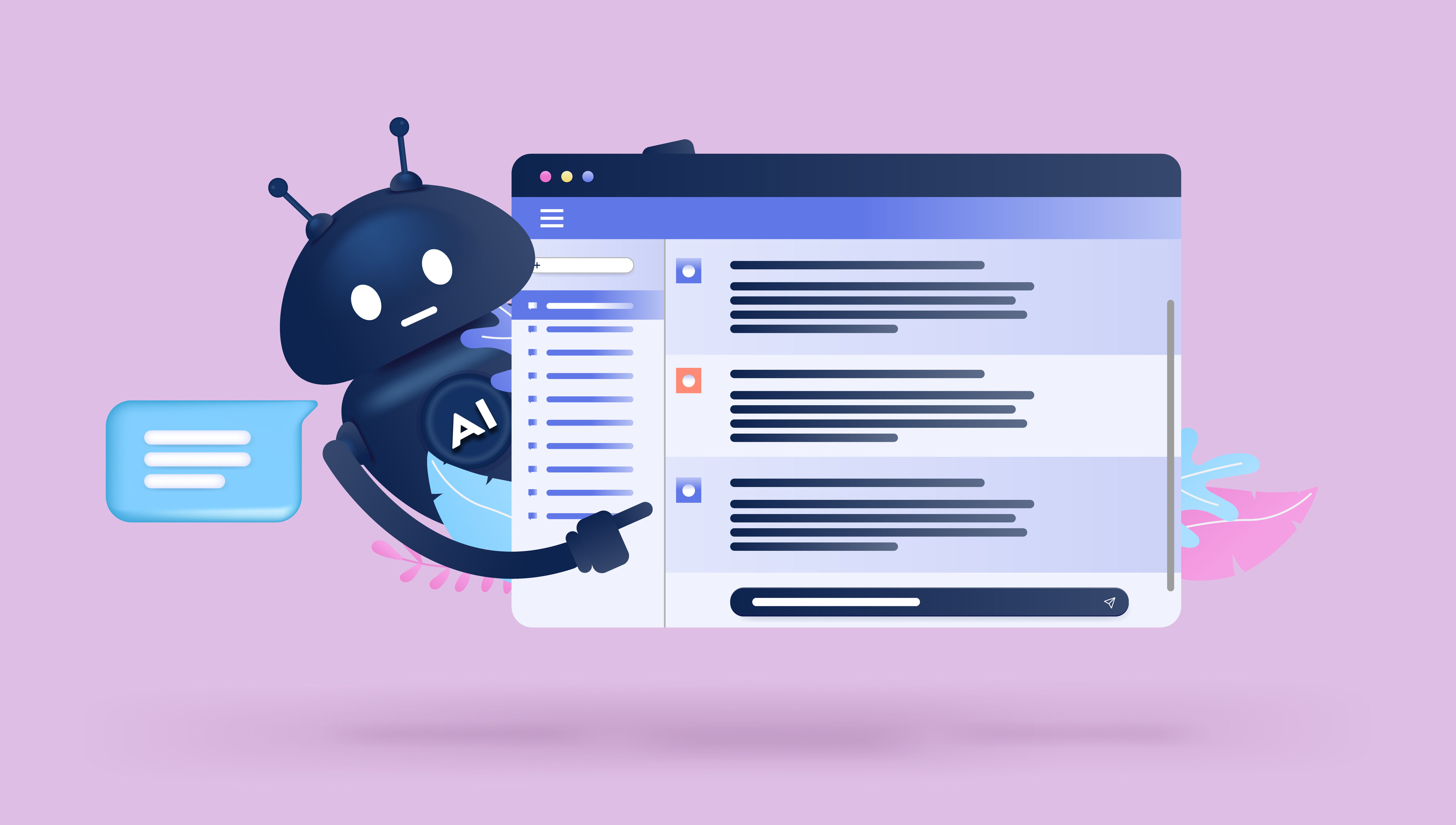Decoding AI Assistants in Videoconferences
Artificial intelligence (AI) is changing the way we work, communicate, and collaborate. You might have already encountered—or will soon enough—the use of AI in videoconference meetings. Broadly speaking, the use of AI in videoconference meetings takes two forms:
- AI tools within videoconferencing software that provide content such as meeting transcripts, summaries and action items
- AI assistants that attend meetings as participants (for example, [Name]’s AI Assistant)
AI assistants can transcribe, translate, summarize and more. However, the use of AI assistants also raises some privacy, ethics, information management, and security issues that need to be considered.
This article provides an overview of AI assistants in online meetings and some of the risks and opportunities they present.
The Emerging Landscape of AI
AI assistants are part of a broader landscape of AI technologies that are becoming more accessible and powerful. Here are some key terms and concepts related to AI:
- Artificial intelligence: An AI system is a machine-based system that infers, from the input it receives, how to generate outputs such as predictions, content, recommendations, or decisions.
- AI assistant: Software that uses AI to perform tasks such as increasing productivity, streamlining and automating workflows, generating content, connecting software, managing calendars, and supporting decision-making.
- Bot: A software application that performs automated tasks.
- Generative AI (GenAI): A category of AI that accepts natural language prompts to generate new content (such as text, images or audio).
- Large language model (LLM): LLMs are the algorithmic basis that power generative AI. They use machine learning algorithms to process vast amounts of data and generate human-like textual responses based on that data.
- Natural language processing (NLP): Tools that interpret text (or transcribed speech) for analysis or to allow conversational interaction with software (such as Chatbots or GenAI). It may use machine learning.
The use of AI assistants and tools has been normalized; they are found in software and online interactions. For example, Siri and Alexa are well-known AI assistants that can perform various tasks based on voice commands. In addition, many websites use chatbots to provide customer assistance. However, this market is changing rapidly in many directions, and we’re seeing a lot of companies and start-ups experimenting with AI, and in particular, integrations with generative AI.
Uses of AI Meeting Assistants

AI meeting assistants can perform a range of functions in online meetings.
Available widely now and increasingly normalized
-
Automated transcription: AI algorithms can transcribe spoken words into text in real-time during meetings, making it easier for participants to follow and reference discussions.
-
Language translation: AI-powered language translation services can facilitate communication among participants who speak different languages, breaking down language barriers in meetings.
-
Meeting summarization: AI can analyze meeting content and generate summaries, capturing key points, action items, and decisions made during the discussion.
-
Document and content analysis: AI can analyze documents and shared content during meetings, extracting relevant information, and providing insights.
-
Automated Agenda creation: AI tools can assist in creating meeting agendas by analyzing historical data, identifying recurring topics, and suggesting relevant discussion points based on past meetings.
-
Smart scheduling: AI algorithms can analyze participants' calendars, preferences, and time zones to optimize meeting scheduling.
-
Noise reduction and audio enhancement: AI algorithms can filter out background noise, improving audio quality during virtual meetings. They can also enhance audio clarity and focus on the person speaking.
- Accessibility features
Emerging or being debated
-
Intelligent virtual assistants: AI-driven virtual assistants can assist in scheduling, sending reminders, and even participating in meetings by providing information or answering simple queries.
-
Gesture recognition: In physical meeting spaces, AI-powered gesture recognition can interpret body language and gestures.
-
Sentiment analysis: AI can analyze the tone and sentiment of participants during meetings, providing insights into the emotional context of discussions.
-
Facial recognition: AI-powered facial recognition technology can identify meeting participants and gauge engagement and sentiments.
-
Automated action item tracking: AI can identify and track action items mentioned during meetings.
- And more emerging uses as the market is seeing rapid expansion and experimentation
Some of these features are already becoming commonplace (for example, noise reduction and audio enhancement, meaning how videoconference software edits out background noise and focuses on the frequency range of human speech). Others are emerging, or much more debated as to whether they represent an improvement or an ethical, moral, relational, or privacy concern.
AI notetakers will be a common usage. For instance, if you join the meeting late and miss the first 10 minutes, you can ask the AI assistant if there were any updates on the project you are working on. At the end of meetings, the AI assistant will give you a quick summary of what was discussed and any action items.
As AI assistants will be integrated with Customer Relationship Management systems, parties meeting with Government of Canada officials will increasingly have the ability to access rich, AI-analyzed, contextual-to-conversation data and histories in real time. Put simply, attendees will be able to not only ask the AI assistant for feedback on what others said during the call, but also to retrieve information from various sources such as previous documents, calendars, emails and chats.
Things to consider

Privacy and security: If a meeting is being transcribed and summarized, it’s being recorded. While we’re getting used to a pop-up in some software letting everyone know that a meeting or event is being recorded, some bots and integrated software may not trigger a recording notification. Some bots will appear as meeting participants, others might be given human names and just appear as though they don’t have their camera on. Other AI will just work in the background.
Transcripts and recordings may then be held by other organizations, often cloud-based AI assistant providers. Some AI assistant software could have weak data protection or be explicitly designed to collect data.
While you should always ensure that all participants in a meeting are identified and known, there's now an additional layer of consideration for whether assistants, human or AI, should be involved in the meeting discussion.
In other words, we cannot assume that there is no AI and no recording. Ultimately, this is a question of trust in the participants and the sensitivity of the discussion.
Information management: for recordings and transcripts recorded by GC officials, records will fall under information management and access to information and privacy legal and policy frameworks.
Ethics: would you record a meeting without the consent of the other party? Legally (in Canada), you can (referred to as “one-party consent”), but practically, most of us wouldn’t consider doing this as it’s a breach of trust.
As this market continues to expand and AI support options become common in widely available software, we will encounter new ethical questions and dilemmas. These will revolve around issues such as recording, sentiment analysis, and attention tracking. From a cultural perspective, we may see either or both of resistance and acceptance. It’s easy to imagine that practices that are currently considered socially inappropriate may in time become the new norm.
Summary of risks and opportunities
There are definitely two sides of the coin for this emerging technology and practice, and the risk and opportunities will become clearer over time as the technology evolves and adoption increases. We can see a few notable considerations today:
Risks:
- meetings recorded without explicit consent
- policy considerations regarding AI use in all sectors
- data breaches of meeting transcripts and recordings
- mis-transcriptions or misrepresentation of officials’ positions
- language inequity as new software is often, or initially, English-first
- efficiency lag while the Government of Canada develops, procures, or adopts policy-compliant solutions and approaches
- informational advantage of AI-assisted meeting participants
Opportunities:
- productivity and efficiency gains, including avoiding low-value tasks and decreasing reliance on meeting attendance
- increased business and stakeholder intelligence
- easy sharing of meeting notes, facilitating openness and collaboration
- enhanced accessibility and language equity through use of in-meeting translation, transcription, image alt text, and plain-language summaries
Conclusion
Public servants and knowledge workers spend a lot of time on video conferences. We’re going to see more and more AI assistants and AI integrations in our most commonly used software. There are remaining questions on many topics, such as ethics, security, data flows and efficiency gains. In short: the AI landscape is changing.
Resources